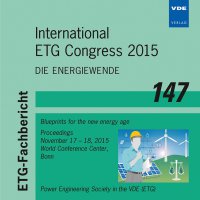Guidelines for the Integration of Voltage Control Applications
Conference: International ETG Congress 2015 - Die Energiewende - Blueprints for the new energy age
11/17/2015 - 11/18/2015 at Bonn, Germany
Proceedings: International ETG Congress 2015
Pages: 8Language: englishTyp: PDF
Personal VDE Members are entitled to a 10% discount on this title
Authors:
Rui, Han; Lang, Stefan; Kreten, Holger; Wellßow, Wolfram H. (Technische Universität Kaiserslautern, Kaiserslautern, Germany)
Hauffe, Peter (Pfalzwerke AG, Ludwigshafen; Germany)
Zimmer, Klaus; Wendel, Carsten; Geiss, Heiko (Pfalzwerke Netz AG, Ludwigshafen, Germany)
Abstract:
The absorption capacity of distributed generation (DG) in rural and suburban low voltage (LV) networks is currently restricted due to possible over-voltages above the limit set by IEC 60038. Whilst the thermal limits can only be solved by storage, curtailment or network extension, a number of advanced and relatively affordable technologies can be implemented to maintain the voltage magnitude. These advanced technologies have been tested separately in several pilot projects, and some products are already available on the market. However, until now, the technical and economic application criteria have not been clearly defined. The project LISA (Leitfaden zur Integration spannungsstabilisierender Applikationen) aims to provide guidelines for the integration of voltage control appliances in LV networks. The project is funded by the German Federal Government with partners, including a utility company, manufacturers, a research institute and a university. The objectives of this project are to investigate different voltage control concepts and systematically check application options in various LV networks. The research results will be summarised into guidelines for the implementation of different options. These guidelines thus provide utilities the optimal solution with regards to both technical and economic aspects, without the need to carry out extensive analysis. The guidelines also give suggestions to equipment and controller manufacturers for their future development, especially for control concepts to coordinate voltages of different grid levels. The voltage control schemes and their interactions are analysed under different network situations. The control strategies that are derived are integrated into the guidelines. The dynamic system behaviours are optimised to guarantee the stability of voltage control. In order to verify the results and the effects of the concepts, a lab test is carried out with selected system configurations and, subsequently, a field test on real networks is planned.


